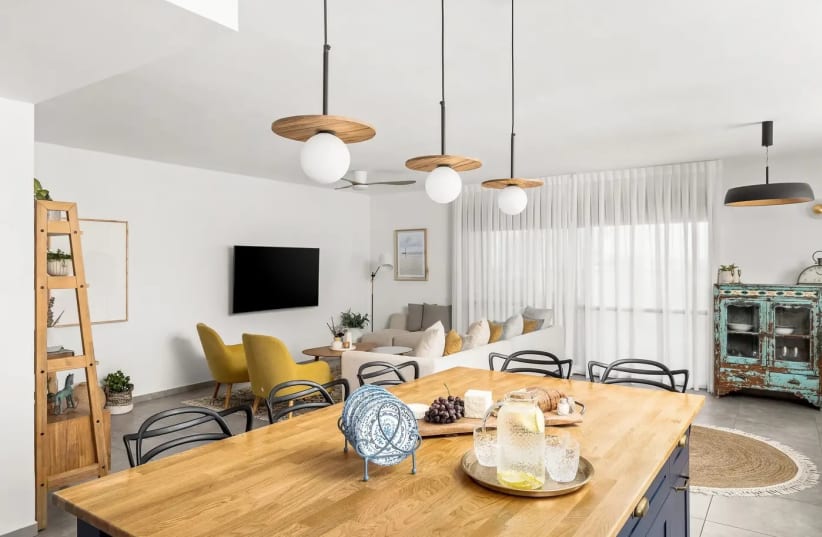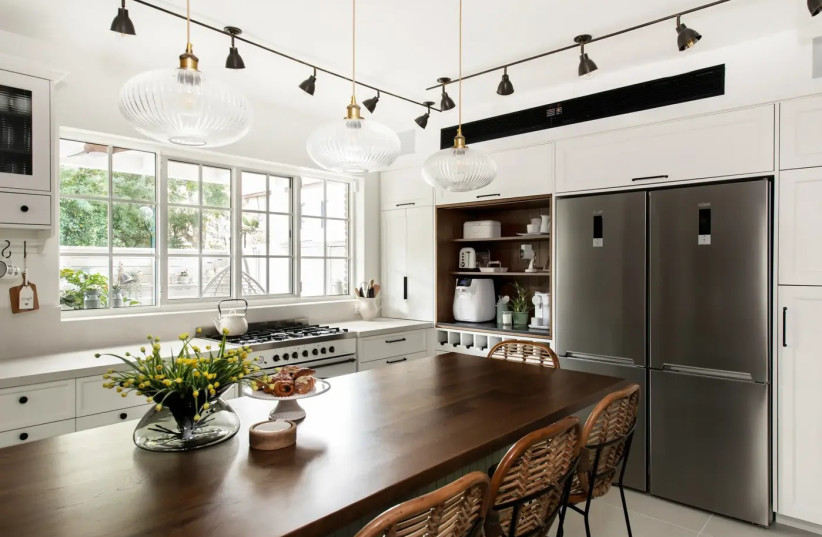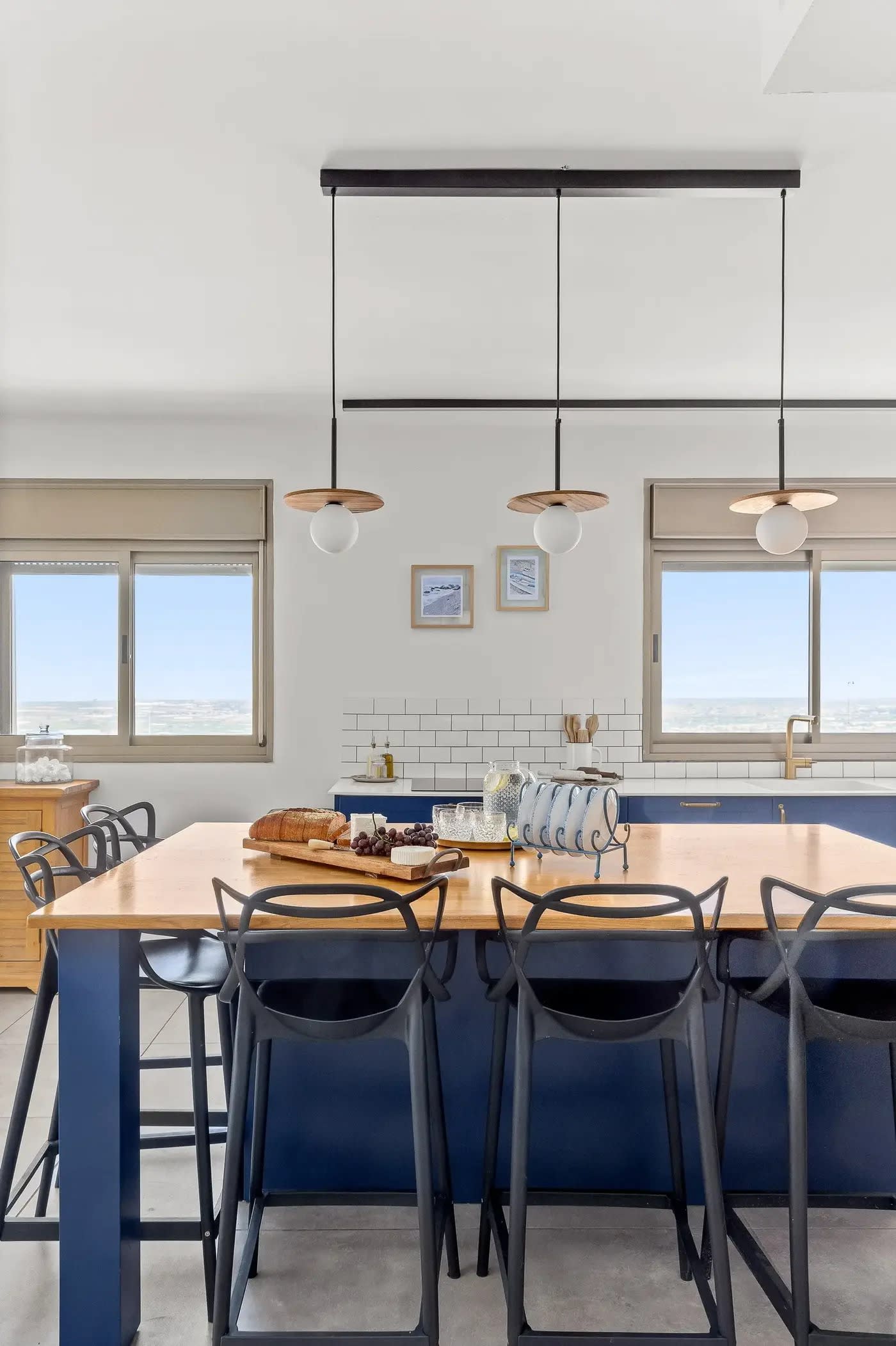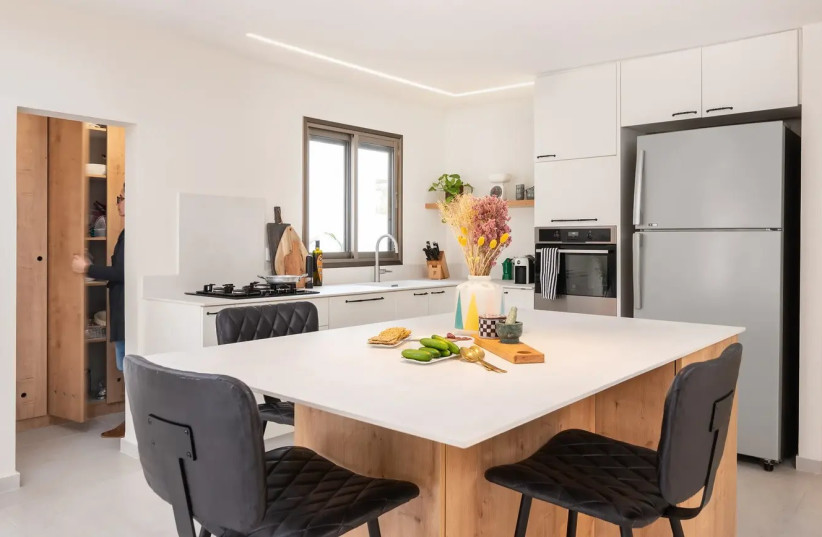In recent years (especially due to the coronavirus pandemic and unfortunately the events of October 7), we are spending more time in our homes than ever before. Therefore, in addition to thinking about creating home workspaces, in many cases Israelis are also emphasizing the importance of planning attractive and comfortable dining areas that allow them to disconnect from the day's troubles and connect with their loved ones, even for a few hours.
After years in which dining areas seemed to have lost their appeal, they are now returning to the center stage. But do they always have to maintain the same configuration? Do we really need them on a daily basis, and if so, is it correct to choose them in their classic form or not?
In the past, in the classic kitchens of old (which were purely functional and devoid of seating areas), there was a dining area in every home. However, when the kitchen became part of the picture, separate dining areas were often abandoned to save space for other functions. Another process that has taken place in recent years is that apartments have gotten smaller, making it difficult to fit all the necessary functions of an Israeli home. Therefore, when planning the communal space, it is important to clarify how we truly live and function, and what our actual needs are as a family.
For example, when do we use the dining area and how often? If the answer is only on holidays, the approach will be different compared to a family that sits around the table daily or every weekend. Other questions that need to be asked are whether we host meals with many participants and, as a result, need to expand the table, and to what extent? Is there a need for a seating counter for both cooking and dining areas? Do we prefer a dining area inside the kitchen or close to the living room, and what shape is suitable for the space: round, rectangular, or square? Each has its advantages and disadvantages.
I recommend also considering the following topic: Are we inclined to do additional activities at the dining table? Do we work there with a laptop or watch TV? Based on the answers to these questions and others, we can understand what is important to us and progress to the planning stage. There are cases where it is definitely advisable to forgo a fixed dining area and opt for a more effective solution, such as an open console, and in other cases, it may be possible to do without a seating counter in the kitchen. Everything depends on the specific needs of the family, and within that, each option has its pros and cons that should be understood before making decisions.
For example, the advantages of a separate dining area over an island are many: first, the atmosphere around the dining area is embracing and family-oriented, and above all, it is simply more comfortable. Its height is about 75 cm, making it more pleasant for a festive and prolonged meal compared to an island with a height of about 90 cm. This is, by the way, a reason why a dining area is preferable, especially in apartments and homes where adults and young children live (or frequently host).
In many homes in Israel, the dining area is located between the kitchen and the living room. Being separate from the kitchen, it remains aesthetic and clean because activities like cutting and preparing food are not performed there just before serving. However, there are also several disadvantages, especially when it is not used frequently, as it takes up space that could be utilized for better purposes. In such cases, a good option is to use a fold-out console table that serves as a decorative piece and can be extended to various lengths (usually up to about 3 meters) when entertaining. If you choose this option, consider planning storage space for the extensions and chairs.
Alternatively, you can choose combined options, such as a dining area connected to an island in the kitchen. This can be created in two main ways: the first is a hidden table top inside the island that can be pulled out using unique mechanisms. The major advantage is that when closed, it does not take up space, but on the downside, the area of the island where the table extends into becomes neutralized and cannot be used for storage. There is also a limitation on the length of the extension that the mechanism allows, and additionally, the island and dining area are connected and cannot be separated.
Another option is to create a dining table adjacent and connected to the island. The major advantage is that the storage capacity of the island is not compromised, and the two units can be separated when needed, allowing guests to sit at the head of the table. The downside is that such a table occupies space even when not in use, and the focus is mainly around the island.
After you have chosen the right design for you, it is important to plan suitable lighting that combines focused and functional lighting with ambient lighting that greatly contributes to the atmosphere in the space. Don't forget to also address the aesthetic aspect - emphasize materials, images, wall coverings, accessories, and more. Choose tables and chairs made of materials suitable for their frequent use. For example, in dining areas that are used frequently, it is very important to choose elements that are durable, scratch-resistant, and easy to clean. Dining areas that are used occasionally can definitely be furnished with natural materials.
The writer is an interior designer, a graduate of the Barbara Breslin School of Design.




